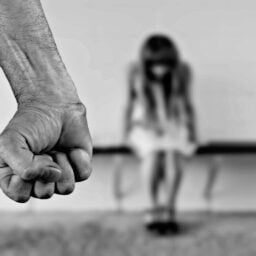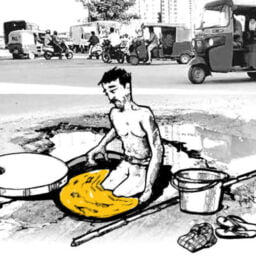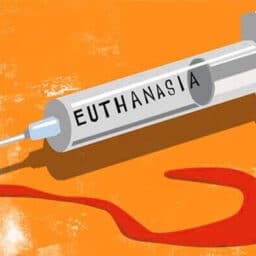INTRODUCTION
There are about 160 million Dalit people living in India. Dalit people who are also called and believed to be “Untouchables” by some are born at the very bottom of a hierarchical system. Dalit means ‘broken’ or ‘ground down’. The word ‘untouchable’ used for them reflects the extreme discrimination towards the Dalit people. Although the Constitution of India outlaws any form of discrimination or oppression against the people hailing from the lower caste, there is widespread oppression and violence against the same because of a lack of social will and effective implementation. Dalit women experience triple discrimination based on their caste, economic status and gender. They comprise 16% of India’s female population. In rural India, more than 65% of Dalit women are illiterate. Violence and sexual assault by the upper caste men against the women of the Dalit community is the handiest tool to inflict humiliation on the entire community and reinforce their unwarranted supremacy.
CRIME RATE
According to “Dalit Women Rise to Justice: Status Report 2021” by All India Dalit Mahila Adhikar Manch (AIDMAM), Dalit women face violence not just because of the matter of them belonging to a particular group but also because they try to break the barriers and assert equal rights in the form of access to land, water, education and employment opportunities. According to National Crime Records Bureau (NCRB) data, India reported a total of 32,033 rape cases in 2019; 11% were from the Dalit community.
In October 2020, a 19-year-old Dalit woman was gang-raped and murdered by a group of upper-caste men in Hathras, Uttar Pradesh. The victim’s body was hastily cremated in the middle of the night without informing her family members. This shows the inherent apathy of the political and social machinery towards these people. Thus, instead of being a human rights question, such instances are reduced to becoming political questions. Dalit women are subjected to different forms of crimes like physical assault, sexual harassment and assault, verbal abuse, domestic violence and rape. There are various other forms of violence perpetrated against Dalit women which are no less grave and degrade them intrinsically.
WOMEN’S MOVEMENT
“Feminism” which is a movement to realize the aim of women to get equal rights and opportunities as their men counterparts has failed to be an inclusive movement when it comes to incorporating the interests of the women hailing from the marginal sections of the society. There is the subjugation of a kind that is conveniently overlooked and deemed to be outside the women’s question. The Dalit women which find themselves at the intersecting juncture of caste, class and gender have been dropped out of the struggle against discrimination and very little has been done to lift them out of their pathetic state. While they, as a matter of their caste, living in the periphery of the villages are discriminated against by the fellow villagers, they bear the additional brunt of being women and face abuses not only from their male counterparts but also from the “upper-caste” community members. Thus, they are the most tormented lot and deserve prompt attention and action to alleviate their sufferings.
The famous #metoo movement that took the entire world by storm and armoured women with the “audacity” to call out their oppressors and mend the historical wrong, was a movement of the upper-caste, well-off and urban women. It was these urban women who publicly shamed their harassers with others celebrating the empowerment. Few or no voices were heard from the most marginalised of women in India. Where the urban feminist movement has come to the point of demanding leadership positions in jobs and a fair chance to maintain work-life balance, Dalit women are still struggling to live a life devoid of basic human rights. In fact, it is these Dalit women who are employed in the inhumane job of manual scavenging which attacks even the little dignity that they have.
EMPLOYMENT
A study by the Centre for Social Studies in Gujarat also concluded that, based on a sample of the top 1000 companies listed in the Indian stock exchanges for 2010, caste-based diversity was non-existent, and nearly 65% of corporate board members were from ‘upper’ caste groups. Women fare worst when it comes to Dalit women’s employment in the corporate sector. In contrast, it is the Dalit women who are mostly employed in the inhuman job of manual scavenging. The most polluting task according to Hindu notions of impurity is cleaning of human excrement, latrines, etc., a task imposed upon the lowliest of the untouchables known by different names.
Dalit women employed in urban areas as house helps, construction labourers, sanitation workers etc. are devoid of any social or job security. Lack of access to education, healthcare and justice leads them to be unaware of their rights and potentials thus, placing them at the lowest position of the hierarchical order. Dalit women make up the majority of landless labourers and scavengers, as well as a significant percentage of the women forced into prostitution in rural areas or sold into urban brothels. The informal nature of their employment deprives them of any employment security or other rights. This provides a fertile ground for the perpetuation of violence. Such crimes or violence and abuse often go unreported because the women are too afraid to lose their only source of income and thus, keep on bearing the wrath of their employers.
REDRESSAL
This situation exists in India today despite constitutional guarantees of non-discrimination on the basis of caste and gender (Article 15(1)), the right to life and security of life (Article 21), and the constitutional directive to specifically protect Dalits from social injustice and all forms of exploitation (Article 46).
Article 14 of the Constitution envisages equality for all. India’s Constitution bans the practice of untouchability. Article 15 of the Constitution prohibits “discrimination on grounds of religion, race, caste, sex or place of birth.”
Further as per clause 2 of the article
“No citizen shall, on grounds only of religion, race, caste, sex, place of birth or any of them, be subject to any disability, liability, restriction or condition with regard to
(a) access to shops, public restaurants, hotels and palaces of public entertainment; or
(b) the use of wells, tanks, bathing ghats, roads and places of public resort maintained wholly or partly out of State funds or dedicated to the use of the general public”
The Legislature has also passed a special act Scheduled Caste and Scheduled Tribe (Prevention of Atrocities) Act, 1989 with a view to check the widespread discrimination and violence against them. Enacted to prevent atrocities and hate crimes against people of Scheduled castes and scheduled tribes, this law is yet to alter the status quo and produce tangible results.
CONCLUSION
Despite being victims of heinous crimes that leave their dignity scarred, their concerns find little space in the mainstream narrative. The constitutional and statutory caveats provide little respite and they have been reduced to being dead letters on paper with no palpable change on the ground. There exists a number of factors for this static status of such individuals including social and political apathy for them. In many cases, the perpetrators of crimes are those very people who have been bestowed with the duty of protecting them. These include police officers, politicians, government officials and the like. This exacerbates the lack of redressal for crimes committed against the community. This is further amplified by the general social stigma attached to them and their work. Society has failed to adopt a progressive attitude and shun the ancient idea of caste roles. There still exists a large section of people who believe that such people should be denied any chance to break the barriers and come out of the age-old ostracization.
Women, being at the juncture of caste, gender and class fare worse when it comes to redressal of their concerns. They have to face the wrath of not only the people from their own caste but also the upper caste while receiving redressal for none. The situation for Dalit women will improve only when there is a drive to eliminate political and social apathy towards them. Education of Dalit women coupled with awareness and sensitization of the masses will go a long way in addressing their concerns. More importantly, the situation will improve only when the administration sets aside the prejudices for them that have been so indifferently been internalized. We have the provisions to lift them out of their pathetic state, what is needed is the will to enforce and implement those.
Author(s) Name: Shristi Shikha (Symbiosis Law School, Noida)
















